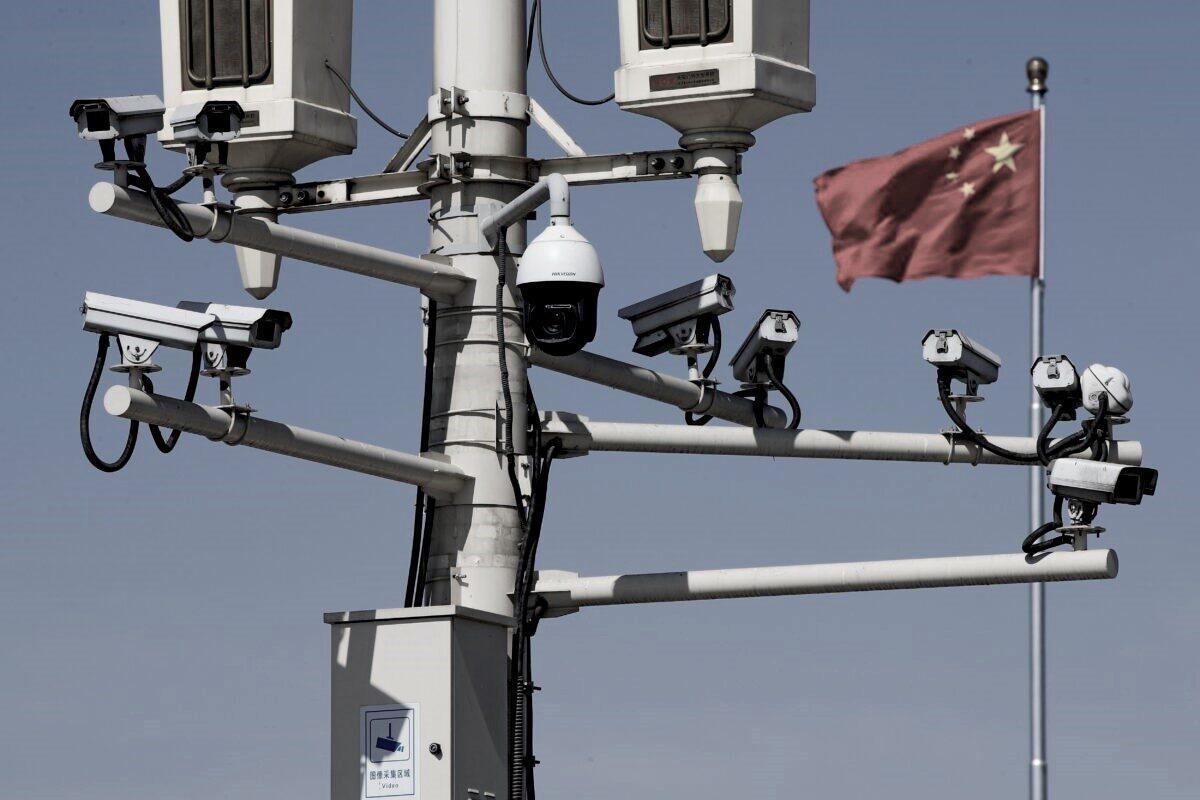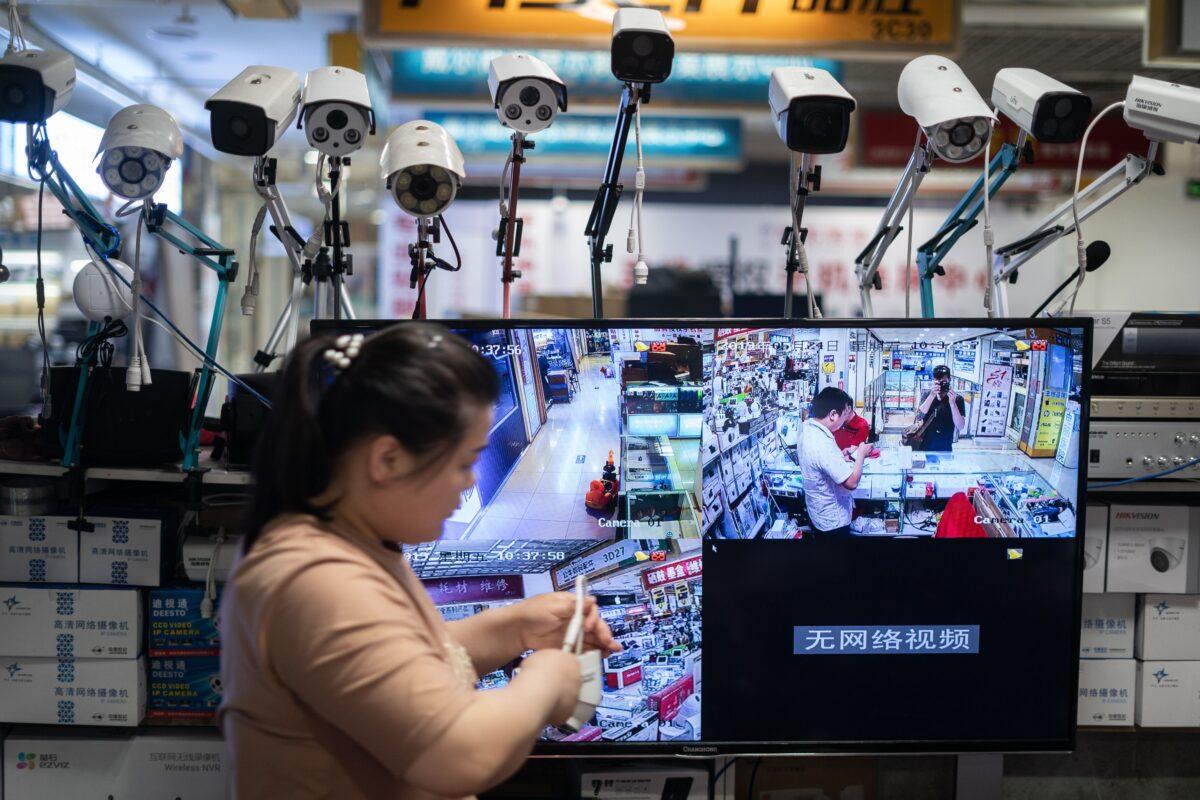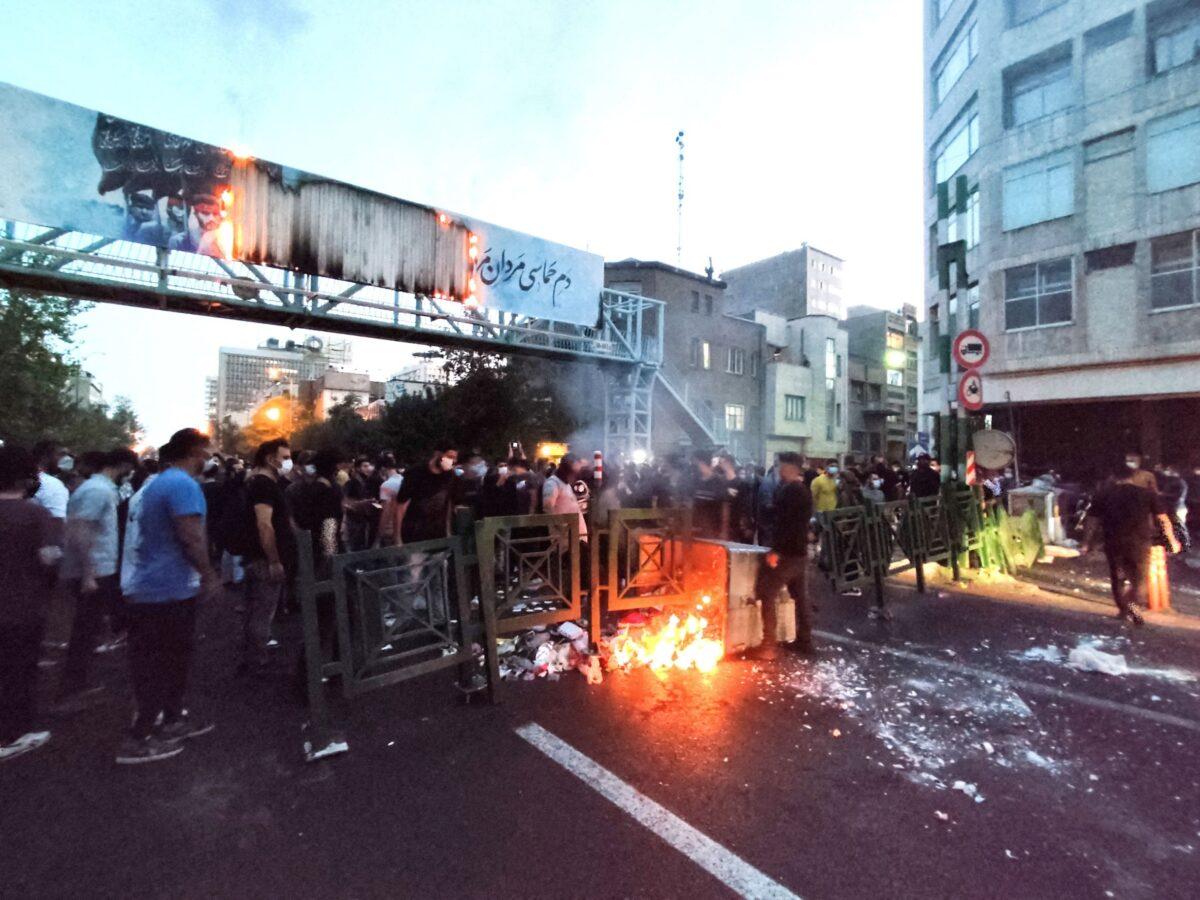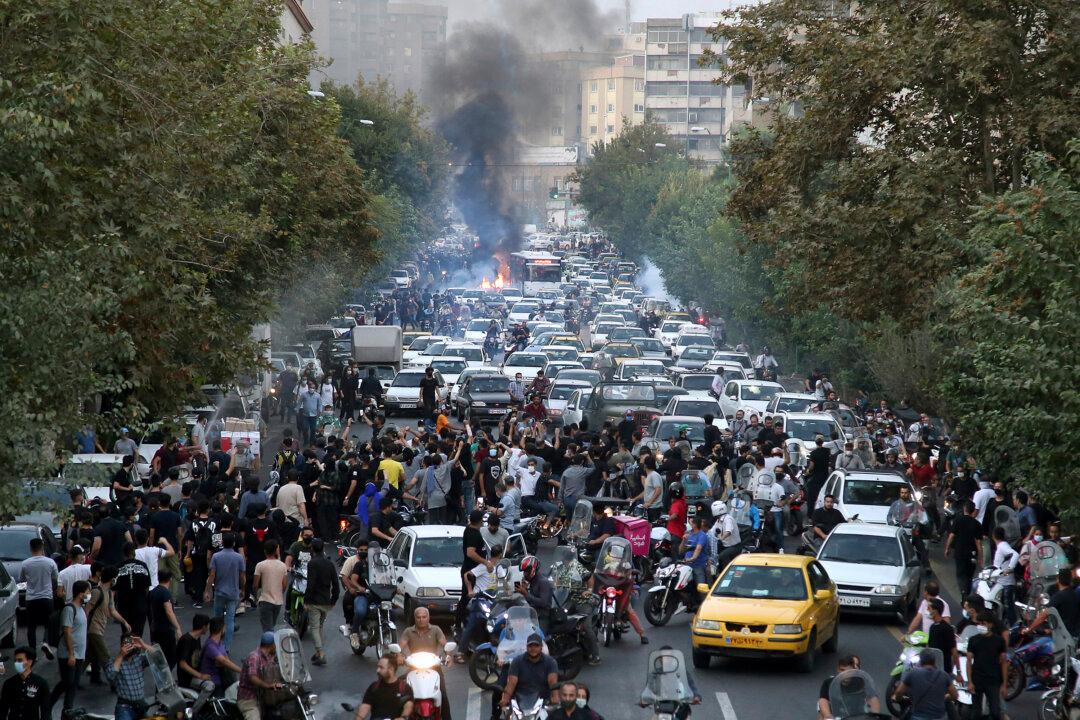Iran is facing increasing nationwide protests since the death of Mahsa Amini, a 22-year-old woman who died on Sept. 16 in suspicious circumstances after her arrest for allegedly improperly wearing her hijab.
The Iranian regime has harshly clamped down on the protesters, and is reportedly aided by Chinese artificial intelligence (AI) surveillance technology in this suppression campaign.
For nearly three months, thousands of people have been rallying in daily demonstrations across Iran after Amini died. The regime’s suppression of protesters includes alleged arbitrary arrests and detentions, gender-based and sexual violence, excessive use of force, torture, enforced disappearances, and executions.

Digital Authoritarianism
Such trends of digital rights abuses have only increased since the protests.To further quell dissent and prevent people from organizing, the regime has also been focusing on enhancing its surveillance capabilities, primarily by looking to China, experts say.
Sahar Tahvili, an AI researcher who holds a doctorate in software engineering, said that since more and more people in Iran are turning to anti-censorship technologies to evade the regime’s controls, Tehran needs to combat this by acquiring more sophisticated surveillance systems.
“There are not many vendors who can export such technology to Iran and as China has the longest history of internet censorship, they are one of the very few available suppliers,” Tahvilli told The Epoch Times in an email.
Tahvili said that the Iranian regime is preparing for a continuous era of protest suppression and they will need technology that can online and in real-time detect preparations for protests so that they can effectively suppress them before critical mass forms.
At least eight Chinese companies sell technology to the Iranian regime that is used to surveil its citizens, the report said. These are Hangzhou Hikvision Digital Technology, Huawei Technologies, ZTE, Zhejiang Dahua Technology, Tiandy, Tencent, Zhejiang Uniview Technologies, and FiberHome Telecommunication Technologies.

Some of these companies have been sanctioned by the United States for aiding the Chinese regime’s repression of Uyghurs in the farwest Xinjiang region.
Jason M. Broadsky, the policy director of advocacy group United Against Nuclear Iran said that Iran’s establishment constantly fears the Western infiltration via the internet and views China as a reliable partner.
Tiandy
According to The Diplomat, local media reports said that 15 million cameras have been installed in 28 Iranain cities and the data is transferred to two control centers, one in Tehran and the other in China. Chinese tech company Tiandy is reportedly the supplier of both the cameras and the knowhow for their operation.This level of surveillance, according to Tahvili, presents a massive infrastructure problem, which is “[m]ade more difficult by the need to run real-time AI face/car/other recognition on the images from these cameras.”
“An average surveillance camera produces at least 1 Mbps of data, and 15 million of them would create 162 petabytes of data per day,” she said
This quantity of data needs to be transported, analyzed and stored and the most efficient way to install these services, and to manage the data storage and processing costs is by “selling” access to the same data, she noted.
“The company that provides surveillance software needs this type of data, especially from other regions of the world so that they can increase the quality of their own systems,” said Tahvili, referring to the Chinese firms.
However, Nariman Gharib, a UK-based Iranian activist opposed to the regime and independent cyber-espionage investigator, said that he doesn’t think that many surveillance cameras have actually been installed in Iran.
“In one of the recent cyber attacks against the Municipality of Tehran, we found that less than 10,000 cameras were installed to control traffic (which are also used to monitor citizens) across Tehran,” he told The Epoch Times in an email.
U.S. Sen. Marco Rubio (R-Fla.), recently called for sanctions on Tiandy for selling its surveillance technology to Iranian regime that he said may be used to punish peaceful Iranian protesters, and for its role in supporting Beijing’s oppression in Xinjiang. The firm is currently not subject to any U.S. sanctions.
Halal Internet
The Chinese and the Iranian regime signed a 25-year and $400 billion worth cooperation agreement titled the Comprehensive Strategic Partnership in March 2021. One of the key areas of cooperation under this agreement is the advancement of Iran’s national internet system, according to multiple media reports.Similar to China’s “Great Firewall”—the world’s largest internet censorship and surveillance apparatus—Iran’s centralized internet involves content filtration and control.
“Essentially, the ‘halal internet’ presented itself as an opportunity for the political elite to contest power over Iranian internet users in cyberspace. Implementing a ‘halal internet’ can thus be ascribed as a soft war response to the 2009 Iranian Green Movement, which consisted of popular protests against the re-election of Mahmoud Ahmadinejad as President of Iran,” the analysis stated.
Broadsky said the Iranian regime is very threatened by social media and views it as a soft war against the Islamic Republic, a fear that has exacerbated with the recent protests.
“So hardline voices will likely cite the protests as need to further restrict the internet,” he said, adding that Iran has increased its dependence on China under its “Look East” policy that’s championed by the supreme leader.
Other than blocking content it deems a violation of religious principles, Tahvili noted that the regime will also be able to control news and share fake news on its national internet.
Tahvili added that the regime would also likely adopt AI surveillance technology on this internet to monitor and control what users do and say.
Gharib said that the Iranian regime is doing its best to increase internet censorship and monitor citizens.
“That’s why they try to promote a tool that can be tracked. For example, there are many internet taxis in Iran, all of those companies cooperate with security authorities and they have live access to their platform,” Gharib said, adding that this is just one of many ways the regime surveils its citizens.

More Surveillance Ahead
Social media platforms like Instagram played a powerful role in amplifying the current protests as traditional media remains severely controlled. As a result, during the protests the authorities temporarily banned Instagram. But they didn’t do so permanently because of the $700 million to $1 billion of revenue it creates for various marketplaces inside Iran.Tahvili posited that the regime could be working with China to develop such a replacement. However, there have been no public reports or announcements of such a partnership.
“It might be a case, but I can’t confirm it 100%. However, Iran has a cyber security agreement with China and Russia,” said Tahvili.
Gharib said that the Iranian regime isn’t looking for help from China for software, but instead is looking for Chinese hardware technology.
“Even in the past, they wanted to promote the WeChat application in Iran, but when people found out that this application was made in China, it was not welcomed,” said Garib, referring to China’s popular everything app.
He added that while the Islamic Republic has intensified its internet restrictions and has blocked popular networks, Iranian citizens continue to use Western mobile apps through virtual private networks (VPNs).
In the context of rising discontent with the regime, Iran will only further take notes from the Chinese communist regime’s internet playbook, according to Tahvili. It'll likely tighten internet censorship in Iran and any effort to circumvent it will be considered criminal and tracking of mobile phones will increase.
“An army of paid internet users and bots will be deployed to control online opinion in favor of the regime. Locally sold smartphones and computers will come with regime-issued spyware software,” she said.





